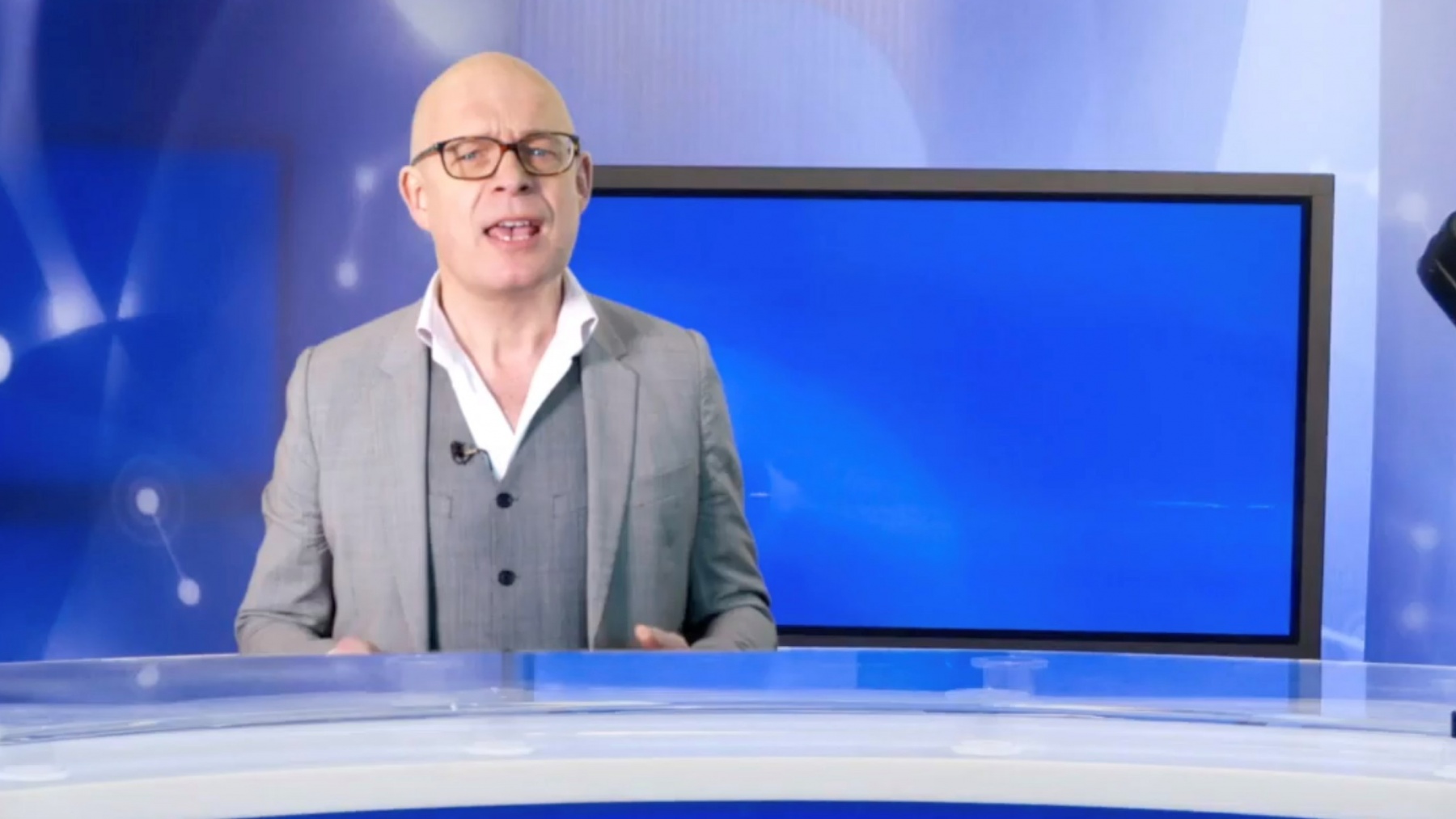Do You Think Like a TV Presenter?

Submitted by Jack Milner on February 21, 2023
VIRTUAL PRESENTATION MASTERY
Do you think like a TV presenter? For virtual presentations, there is much we can learn from them. These presenters need to be natural and authentic, but their presentation style to camera is always a heightened reality. To achieve this, you need to focus on interacting with the camera as though it is your audience—and this is the case whether you’re talking to one person or a thousand.
If you want virtual presentation mastery when talking to camera, you need to engage, inform, and entertain. If you’re not that bothered, then stick to dull and uninteresting.
A TV presenter is trained to look right at the camera, never allowing his or her eyes to move away from that lens. You must aim to do similarly with a couple of caveats which I’ll come to shortly. The key thing to remember is that the camera represents the eyes of your audience. When you want to make eye contact, look into the lens. If you try to make eye contact with the participants on your computer screen—although to you it makes sense—to them it feels like you are looking beneath their eyes. Instead, focus on the camera. I promise it will give you real star charisma, and your audience will feel like you are making eye contact.
The problem with this technique is that, for the presenter, it feels phony. The faces of your audience members are beneath the camera on your screen,
so talking to camera seems disconnected, arrogant even. When you talk to someone face to face, you don’t spend your time looking into the distance above their head.
So, how do we manage this? First, we are allowed a little leeway as you will see. Although it feels like TV presenting, it is not TV presenting.
One little tip is to attach a photo to the camera of someone who gets you— with whom you feel totally at ease and in whose company you are most yourself. Now, talk to the photo as though it’s that person. Failing that, draw a smiley face on a sticky, and put that up behind your camera. This will remind you to keep looking at the lens.
How to read body language when presenting to the camera.
Position the audience video feed just beneath your camera. Then toggle the window to a smaller size than usual. We want to have audience faces as close to the camera as we can. That way when you look at their faces, it will still seem as though you are talking directly to them.
Now, while you’re presenting, it will look to the audience as though you’re making eye contact, while you, the presenter, can still read their reactions.
Where you position yourself on camera matters.
Aim to face the camera. I know it seems obvious, but I have seen people presenting with their screens arranged in such a way that the faces of their participants are to the side, which gives the impression that they are looking away from the camera and are more interested in their wallpaper than the audiences. Have your eyes level with the camera. Try not to look down at the camera (the voice of God) or up at the camera (I am your servant.) Neither is a good look. Instead, you and the camera (the viewer) should be on the same level.
Looking down at camera, the presenter can come across as having a God complex.
While looking up, presenters can appear subservient.
Aim for eyes level with the camera.
Varying the distance between you and the camera is a good thing. Film directors will juggle between three distances, or frames, for a shot. Long shot (landscape, whole body, or bodies); mid-shot (waist up); and close-up (face.)
Close-ups will be used to land a moment. However, for close-ups to work and provide emphasis, not every shot should be a close-up. Despite what some soap opera directors might think, not every shot in a show is vital. You need to vary it.
I prefer mid-shot as this gives my arms and body a chance to get involved. Then occasionally, when I need to make an important point, I move my head towards the camera for a close-up or switch the scene on my Ecamm and zoom in with the camera. It’s a personal choice.
The main don'ts are:
· Don’t go in too close. It can be scary.
· Don’t move too far away from camera. Your head could look like a pea.
· Don’t look down at the camera. (God complex.)
· Don’t look up. (Subservient)



